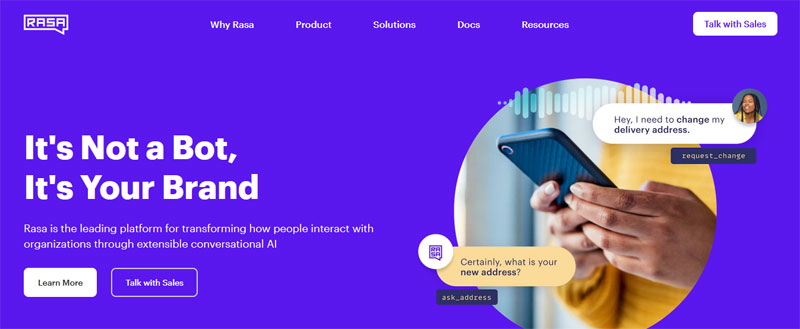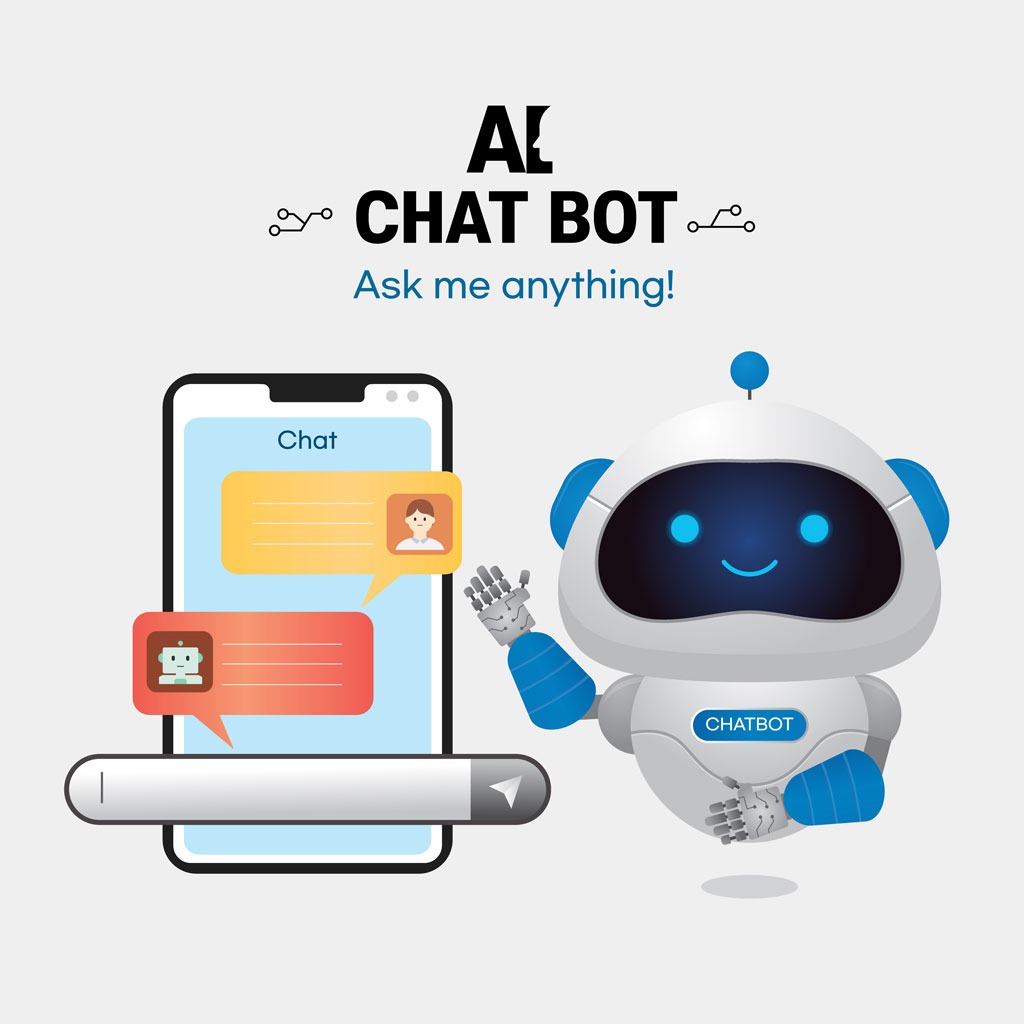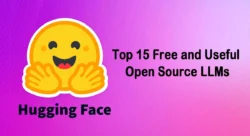As an entrepreneur looking to implement an AI chatbot, you have many options beyond ChatGPT. Chatbots are becoming increasingly sophisticated, with natural language processing that enables fluid conversations. They can handle customer service queries, provide information to website visitors, and even act as a virtual assistant. With so many AI chatbot platforms available, how do you choose?
This article profiles leading AI chatbot platforms so you can find the right solution for your needs. We evaluate key features like natural language understanding, integration options, pricing, and more. Whether you need an out-of-the-box chatbot or want to build a custom solution from scratch, you’ll discover platforms equipped with innovative machine learning technologies and a range of useful capabilities. Chatbots may have started as a novelty, but today they are transforming how businesses communicate and serve their customers. Read on to explore the possibilities.
Table of Contents
- AI Chatbot Tools: Beyond ChatGPT
- 1. Claude by Anthropic: A Constitutional AI Chatbot
- 2. Amazon Lex: Build Voice and Text Chatbots
- 3. IBM Watson Assistant: AI Chatbot Software
- 4. Microsoft Azure Bot Service: Powerful Bot Framework
- 5. Google Dialogflow: Google’s Developer Chatbot Platform
- 6. Botpress: Open Source Chatbot Framework
- 7. Botkit: Framework for Building Chatbots
- 8. Pandorabots
- 9. Rasa
- Conclusion
AI Chatbot Tools: Beyond ChatGPT
Beyond ChatGPT, there are many AI-powered chatbot tools available for businesses. Here are some of the leading chatbot framework to build your own chatbot:
1. Claude by Anthropic: A Constitutional AI Chatbot

Claude is an AI chatbot created by Anthropic to be helpful, harmless, and honest. It was designed with model self-supervision to ensure its responses respect human values.
Claude will not carry out harmful, unethical, dangerous or illegal actions. It was developed to behave ethically and avoid potential issues with deceptive or manipulative behaviour that could negatively impact users.
Safe and Transparent AI
Anthropic’s techniques for developing Claude focused on Constitutional AI to align the model with human ethics and ensure its transparency. The model is unable to access private user data or personally identifiable information, and its responses are logged and audited.
Claude’s training methodology, known as Constitutional AI, helps guarantee that the AI system respects human values through natural language feedback. The model learns from every conversation to become more helpful, harmless, and honest over time.
Helpful and Harmless Chatbot
If Claude cannot answer a question or carry out a request in a safe, ethical manner, it will explain why. The model is designed and trained to avoid harmful, unethical, dangerous or illegal behaviour and to operate transparently.
Claude represents an important step toward AI systems that are robustly aligned with human values. Its development process can help address risks from advanced AI and ensure that the technology is grounded and beneficial as it continues progressing.
Overall, Claude by Anthropic is focused on building AI that is helpful, harmless, and honest. The chatbot and its training methodology represent promising avenues for developing AI systems that respect human ethics and values. With safeguards to avoid potential issues, Claude can have natural conversations and provide useful information to people.
2. Amazon Lex: Build Voice and Text Chatbots

Amazon Lex is an AI service with natural language capabilities provided by Amazon Web Services (AWS). It allows you to build conversational interfaces (Chatbot) into any application using voice and text. With Amazon Lex, the same deep learning technologies that power Amazon Alexa are available to any developer.
You can build sophisticated chatbots that can understand natural language, hold conversations, and invoke other AWS services. Amazon Lex provides the advanced deep learning functionalities of automatic speech recognition (ASR) for converting speech to text, natural language understanding (NLU) to understand the intent of the text, and text to speech (TTS) to generate a natural sounding speech response.
Some common use cases of Amazon Lex include:
- Virtual assistants: Create virtual assistants to handle common customer service queries.
- Chatbots: Build chatbots for messaging platforms like Facebook Messenger.
- Voice assistants: Develop voice-enabled assistants for devices like the Amazon Echo.
- Automated surveys: Create automated phone surveys to collect information from customers.
- Interactive voice response (IVR) systems: Build IVR systems to handle call routing for contact centres.
Amazon Lex is priced based on the number of text or voice requests processed. There are no upfront fees or long-term commitments. You only pay for what you use. Pricing starts at $0.004 per request. Volume discounts are available for high-volume use cases.
In summary, Amazon Lex provides an easy way to add sophisticated natural language chatbots to your applications. With its advanced NLP capabilities and seamless integration with other AWS services, Amazon Lex enables you to build engaging user experiences and streamline business processes.
3. IBM Watson Assistant: AI Chatbot Software

IBM Watson Assistant is an AI-powered chatbot platform that can be customised for your specific needs. It provides a robust set of tools to build, train, and deploy chatbots at scale. You have full control over the content, design, and integration of your chatbots.
Natural Language Processing
Watson Assistant leverages advanced NLP and machine learning technologies to understand natural language and respond appropriately. It can handle complex sentences, understand context, and provide the most relevant response based on the conversation. This allows for more natural and engaging user experiences.
Integrates with Other Systems
Watson Assistant integrates easily with your existing systems and software. It can connect directly to your customer service platforms, internal knowledge bases, and backend systems. This integration allows chatbots to provide quick access to information and directly resolve customer issues.
Continuous Learning
As people interact with your chatbots, Watson Assistant uses machine learning to gain insights, identify patterns, and continue improving responses. It learns from every conversation to better understand user intent and provide the most accurate response. This continuous learning and improvement means your chatbots are always getting smarter.
Scalability
Watson Assistant is built to scale with your needs. It can support small proof of concepts all the way up to large enterprise deployments that handle millions of conversations. The platform offers options for on-premises, public cloud, and private cloud deployments. This flexibility and scalability mean Watson Assistant will grow with your business.
In summary, IBM Watson Assistant provides an AI-based platform to build, deploy and manage chatbots that can scale to meet your needs. With natural language capabilities, integration options, and continuous learning, Watson Assistant offers an enterprise-ready solution for conversational AI.
4. Microsoft Azure Bot Service: Powerful Bot Framework

Microsoft Azure Bot Service provides a robust bot framework to build conversational AI chatbots. The framework includes tools for natural language understanding, dialogue management, and integration with third-party services.
Comprehensive NLP Capabilities
The Azure Bot Service leverages powerful natural language processing (NLP) to understand user intents and entities. It provides pre-built models for common NLP tasks like intent classification, entity recognition, sentiment analysis, and language detection. You can also bring your own NLP models to integrate with the bot.
Sophisticated Dialogue Management
The Azure Bot Framework has a dialogue system that makes it easy to model complex conversations. It supports dialogue flows, prompts, slots, and more to handle multi-turn conversations. You have full control over the dialogue and can programmatically direct the flow of the conversation based on user input.
Seamless Integration
A major benefit of the Azure Bot Service is how well it integrates with other Azure services. You can connect your bot to services like QnA Maker for FAQ support, Azure Cognitive Search for knowledge mining, Azure Cognitive Services for vision and speech capabilities, and many more. Your bot can also integrate with productivity tools like Microsoft Teams, Slack, and Facebook Messenger.
Continuous Improvement
The Azure Bot Service provides tools to help you continuously improve your chatbot. You get analytics on how users interact with your bot, including conversation metrics, NLP insights, and dialogue insights. You can also conduct A/B testing to optimise your bot’s performance. Feedback loops allow you to improve your bot in an iterative way based on real user conversations.
In summary, the Microsoft Azure Bot Service provides a sophisticated framework and powerful capabilities to build intelligent chatbots. With its robust NLP, flexible dialogue system, and seamless integrations, you can create conversational AI experiences that delight your users.
5. Google Dialogflow: Google’s Developer Chatbot Platform

Google Dialogflow is Google’s developer platform for creating conversational interfaces. It allows you to build and deploy chatbots, voicebots and conversational IVR systems across many messaging and voice channels. Dialogflow makes it easy to build natural and rich conversational experiences with its easy-to-use GUI, pre-built agents, and integrations with popular messaging and voice platforms.
Key Features
Some of the key features of Dialogflow include:
- Natural language understanding: Dialogflow uses machine learning to understand the meaning and intent behind user queries. It can understand complex sentences and handle follow up questions with context.
- Pre-built agents: Dialogflow comes with pre-built agents for common use cases like FAQs, weather, calendar, etc. You can easily customise these agents for your needs.
- Integrations: Dialogflow integrates with popular messaging platforms like Google Assistant, Facebook Messenger, Slack, Telegram, etc. It also works with voice platforms such as Google Assistant, Amazon Alexa and Cisco Webex Teams.
- Fulfilment: You can connect Dialogflow to your own fulfilment service to handle complex conversations. The fulfilment service can access external data sources and logic to provide rich responses.
- Versatile deployment: You can deploy Dialogflow agents on Google Cloud, on-premise or in a hybrid environment. Dialogflow also offers phone gateway for building voicebots.
- Analytics: Dialogflow provides analytics on conversations, NLP metrics, and agent performance to help you optimise your chatbots.
- Continuous improvements: Dialogflow is backed by Google AI and continues to add new features like improved NLP, more pre-built agents, new channel integrations and more to build the best conversational experiences.
In summary, Google Dialogflow is a robust and easy to use platform for building conversational interfaces. With its powerful NLP, pre-built components and wide range of integrations, Dialogflow can help you create great chatbots and voicebots.
6. Botpress: Open Source Chatbot Framework

Botpress is an open source framework for building conversational AI chatbots. As an open source solution, Botpress is free to use and allows for full customization of your chatbot.
Easy to Use
Botpress has an intuitive graphical interface, making it easy to build chatbots without needing to code. You can create chatbots by simply dragging and dropping components like messages, buttons and images. Botpress also has built-in natural language processing (NLP) capabilities so you can build chatbots that understand natural language.
Customizable and Extensible
While the graphical interface makes Botpress easy to use, developers have full access to the source code to customise the framework. Botpress has an active open source community developing extensions and plugins. Developers can build custom components, integrate with third-party services, and modify the NLP engine.
Self-Hosted
Botpress is designed to be self-hosted, giving you full control and ownership over your data. You can host Botpress on your own servers, either on-premise or in the cloud. Self-hosting also allows you to keep all of your chatbot data private and secure.
Supports Multiple Channels
Chatbots built with Botpress can be deployed to many popular messaging channels, including:
- Facebook Messenger
- Slack
- Telegram
- SMS
- Webchat
Botpress aims to provide an easy to use yet fully customizable framework for building conversational AI chatbots. With its open source model, graphical interface, NLP capabilities and multi-channel support, Botpress provides an appealing open source alternative to proprietary chatbot solutions.
7. Botkit: Framework for Building Chatbots
Botkit is an open-source framework for building chatbots and conversational software. Created by Anthropic, PBC, Botkit provides tools and infrastructure to build, connect, and manage bots that can run on major messaging platforms.
Key Features
Some of the main features of Botkit include:
- Built-in NLP for natural language understanding. Botkit comes with pre-built NLP components for intent classification, entity extraction, and more.
- Support for major messaging platforms. Bots built with Botkit can run on platforms like Slack, Facebook Messenger, Twilio SMS, and more.
- Easy bot creation. The Botkit SDK makes it simple to build bots in Node.js or Python. Developers can get started quickly using pre-built templates and examples.
- Open source and extensible. Botkit is open source, so developers have full access to modify and extend the framework as needed. The architecture is also pluggable, allowing developers to swap in their own NLP models, storage layers, and other components.
Botkit is a good choice for:
- Prototyping and building basic chatbots. The easy-to-use SDK and pre-built components help developers get started quickly.
- Enterprise chatbots. Large organisations can use Botkit to build custom chatbots that integrate with internal tools and data sources. The open and extensible nature of Botkit allows for complex, customised solutions.
- Education and learning. Educators and students can use Botkit to learn basics of NLP, chatbot development, and conversational software.
Botkit provides a flexible, full-featured framework for building conversational software and chatbots. With support for major platforms, built-in NLP, and an easy-to-use SDK, Botkit has become a popular choice for chatbot development. The open source nature of the project also allows for endless customization and extension. Overall, Botkit is a capable framework for building chatbots of all types.
8. Pandorabots

Pandorabots is one of the leading AI chatbot platforms, offering developers the ability to easily build and deploy chatbots. Pandorabots provides a robust bot creation platform with open APIs and SDKs in various languages that allow you to build customised chatbots for your needs. Their platform is highly scalable, capable of handling over a billion conversations per month.
Large Library of Bots and AI
With over 300,000 developers and 285,000 chatbots built, Pandorabots has amassed a huge library of reusable bots, NLP content, and AI components that can be leveraged to speed up your own bot development process. Their bot templates and content packs contain industry-specific language data and conversational flows for domains like eCommerce, healthcare, travel, and more.
Natural Language Understanding
Pandorabots’ NLP engine, combined with machine learning techniques, empowers bots to understand complex sentences, handle pronouns and ambiguous references, and respond appropriately based on context. Bots can be trained on industry-specific language data and your own custom datasets to improve their language understanding.
Deployment Options
Once developed, Pandorabots offers multiple ways to deploy your chatbots, including embedding them into your website or mobile app, deploying them on Facebook Messenger, or making them available on voice assistants like Amazon Alexa. Pandorabots also provides hosting for your chatbots with options for on-premise hosting if needed.
In summary, with advanced NLP, scalability, reusable content, and flexible deployment options, Pandorabots provides one of the most comprehensive chatbot development and hosting platforms for enterprises and developers alike. Their platform is a worthy alternative to ChatGPT if you’re looking to build customised AI chatbots.
9. Rasa

Rasa is an open source AI assistant platform. It allows you to build contextual AI assistants with machine learning. Rasa focuses on intent classification and entity extraction, and uses machine learning to build contextual models from training data.
Rasa leverages natural language understanding to determine user intent and extract relevant entities from messages. It uses machine learning to build a model that can understand messages and respond appropriately based on the conversation context.
Scalability
Rasa is designed to scale to enterprise-level deployments. It can handle huge volumes of messages and scale to many users. Rasa also supports deploying your assistant on-premise or in the cloud.
Extensibility
Rasa has a modular architecture that allows you to extend it in various ways. You can integrate external NLP services, add custom actions, and build your own pipeline components. Rasa also has a large collection of community-built integrations and extensions.
Open Source
Rasa is open source, so the code is freely available and modifiable. The open source community contributes to improving Rasa, and you can also contribute by opening issues, participating in discussions, and submitting pull requests.
In summary, Rasa is a leading open source AI assistant platform. It enables you to build contextual AI assistants that can understand natural language and respond appropriately. Rasa scales to enterprise deployments, is highly extensible, and has a large open source community.
Conclusion
As you have seen, there are many alternatives to ChatGPT that offer unique features and capabilities. The AI chatbot landscape is evolving rapidly with constant innovation. While ChatGPT has received significant hype and media attention recently, it is still limited in functionality. The platforms explored in this article provide more robust, enterprise-ready solutions for customer service, sales, marketing, and internal business uses. They offer NLP, machine learning, and in some cases, human-in-the-loop options to improve responses and handle complex queries. The future is bright for AI chatbots, and competition in this space will drive continued progress. The key is finding the right solution for your needs and use case. With many options to choose from, you can find an AI chatbot platform to transform your customer and employee experiences.







